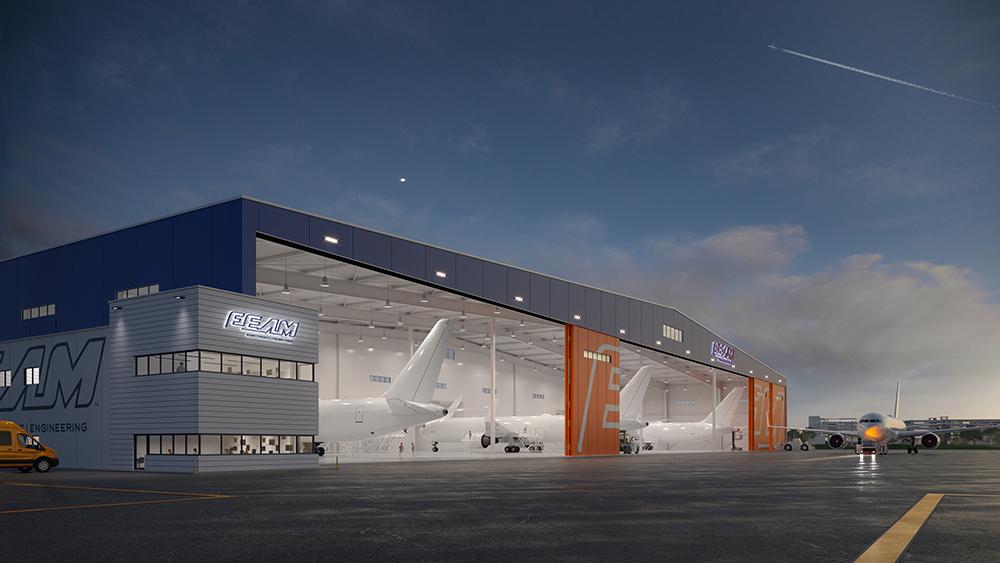
Just two short years after it opened its maintenance facility at Cincinnati/Northern Kentucky International Airport (CVG), FEAM has announced plans to more than double its capacity there with a second $40.2 million hangar.
According to FEAM CEO Fred Murphy, growing e-commerce demand and cargo fleets are driving more action at the airport, which the MRO is trying to prepare for.
“We’re seeing continued e-commerce, primarily led by Amazon, but at CVG we’re also seeing quite a bit from DHL as well. The demand is still very high for cargo and, particularly with Amazon, their growth plans for adding more aircraft,” he says. “We’re trying to gear up to meet those demands by being able to create more capacity to assist all the operators that carry Amazon freight.”
Murphy notes that the new hangar will “provide ample aircraft maintenance capacity and resources for CVG’s growing cargo operations,” adding: “Our initial success with our first hangar, and immediate demand for expansion, confirms that we are in the right place, at the right time, with the right partners.”
Located adjacent to its existing 100,000 ft.2 hangar at CVG, the new three-bay, 150,000 ft.2 widebody hangar will be able to accommodate up to Boeing 767-sized aircraft. It will feature three widebody parking spots on its adjacent ramp space, as well as workshop, storage and office space.
FEAM already offers a range of maintenance services at the airport, including A checks, engine changes, structures repair and non-destructive testing. According to Cam Murphy, president of FEAM, the new hangar will further grow its capacity.
“With the market changing and cargo really expanding, this hangar is going to give us capacity to not only take on more work, but increase our capabilities with the current customer base at CVG,” he says. “CVG is one of the top cargo airports in North America, so expanding our footprint here makes a lot of sense for us and for our customer base as well.”
As part of its ramp-up at the airport, FEAM plans to add nearly 200 new aircraft mechanic jobs, as well as more than 50 administrative and material specialist jobs. To help fill these roles, Cam Murphy says FEAM will leverage its recently announced partnership with Epic Flight Academy. Ultimately, he says FEAM would like to work with Epic to establish an A&P school at or nearby CVG to help build the pipeline.
CVG will not be the only location where FEAM is hoping to recruit more staff. The MRO has been growing rapidly over the last year, adding new line stations and facilities at Columbia Metropolitan Airport, Spokane International Airport, Los Angeles International Airport and Austin-Bergstrom International Airport. It opened an expansion of its Miami facility in summer 2021 and recently began growing its influence in Europe with the acquisitions of UK-based BOSA and Denmark-based Northern Aerotech. The acquisitions have added 12 European line stations to FEAM’s network.
Cam Murphy says FEAM will be hoping to mimic its U.S.-based workforce recruitment efforts in Europe as well. “It’s not just a U.S. labor shortage—it’s a world shortage,” he says. “We’re utilizing all the resources we can and connecting with all the communities we can to help foster this environment of growing the next generation of aviators.”





